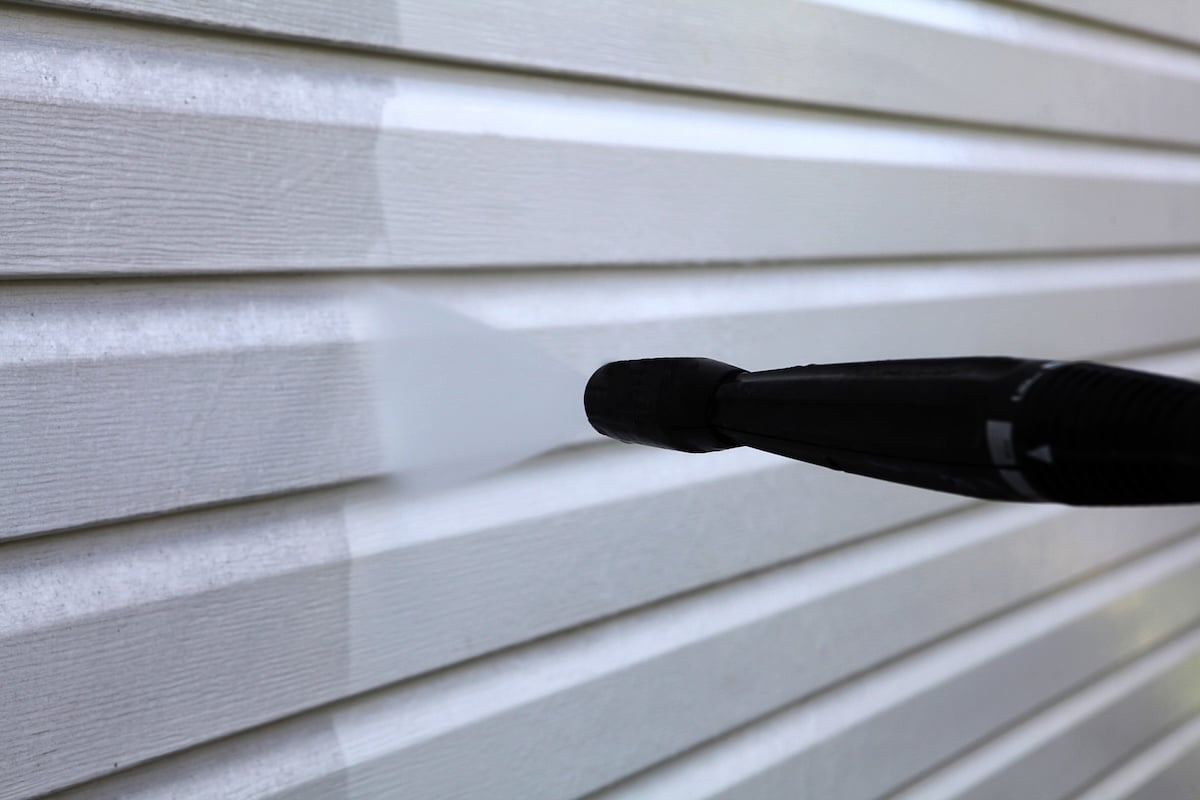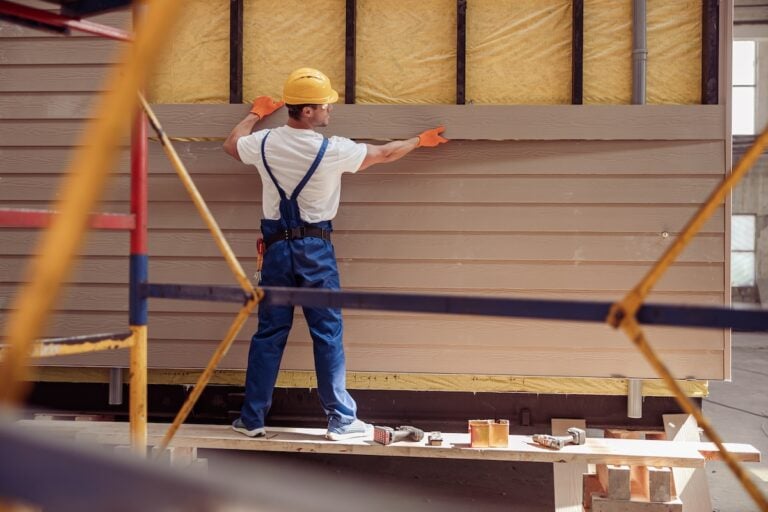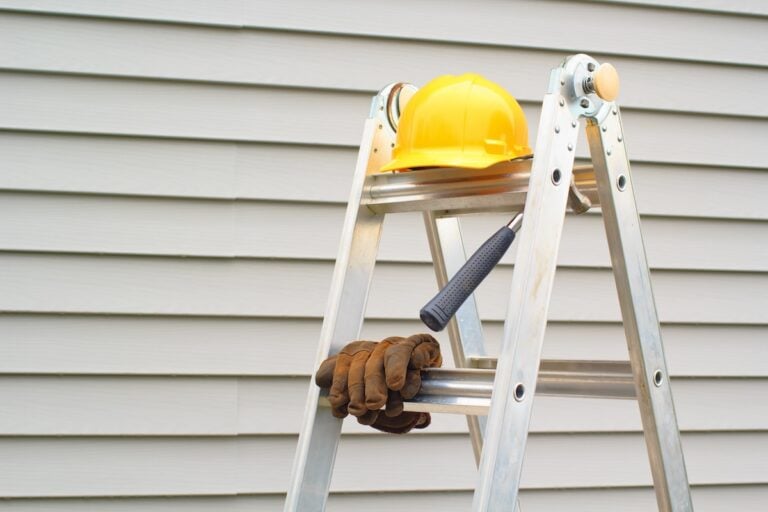If your home’s exterior is looking a little grimy, you might be wondering how to pressure wash siding without damaging your vinyl panels or water-sealing. It’s a smart question, because while pressure washing can be effective, doing it the wrong way can cause cracks, leaks, or mold behind the walls.
In this guide, we’ll cover:
- The safe way to pressure wash vinyl siding: Without causing damage to your home.
- Tools and techniques that work best: From PSI levels to cleaning solutions.
- Common mistakes to avoid: And what to do instead.
Let’s break down how to get your siding sparkling clean, without a costly repair later.
👉 Is It Safe To Pressure Wash Vinyl Siding?
The short answer is yes, but only if you follow the proper techniques. Vinyl siding can handle moderate water pressure, but too much force or a poor angle can damage the panels or drive water behind them.
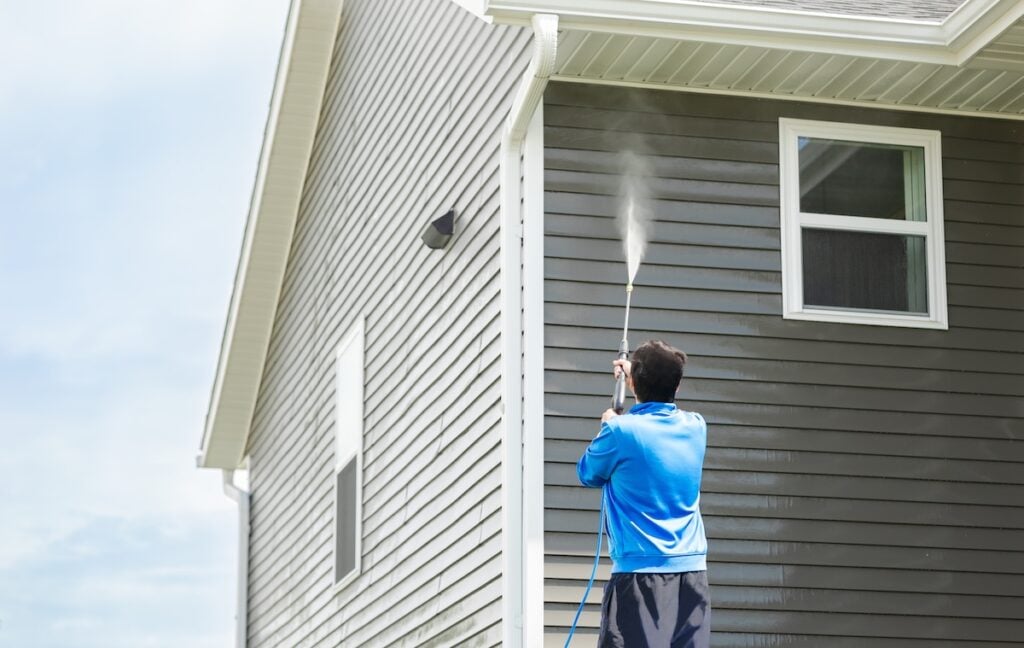
Why Pressure Washing Is Effective
Vinyl siding is durable and relatively low-maintenance, but it can still build up:
- Dirt and grime: Especially near ground level or in shaded areas.
- Algae and mildew: Often seen on the north-facing side of homes.
- Cobwebs and pollen: Common in the spring and fall.
Pressure washing can remove all of these quickly and thoroughly—if done right.
Risks of Doing It Wrong
Improper use of a pressure washer can lead to:
- Cracks or holes: From high PSI or a narrow spray tip.
- Warped panels: If water gets behind the siding and warps the sheathing.
- Mold or rot: If moisture becomes trapped between your siding and your home.
Always follow a cautious, low-pressure approach and use the right tools for the job.
✅ Step-By-Step: How To Pressure Wash Vinyl Siding
Before you get started, read these steps carefully to ensure a safe and effective cleaning process.
Step 1: Gather the Right Equipment
Having the correct tools and safety gear makes all the difference.
- Pressure washer (electric or gas): Choose a unit with adjustable pressure and at least 1500–2500 PSI.
- Wide-angle spray nozzle (25–40 degrees): Prevents damage from concentrated pressure.
- Extension wand: Helpful for reaching upper levels without a ladder.
- Mild detergent: Look for siding-safe or biodegradable exterior cleaners.
- Protective eyewear and gloves: Safety first—especially when using detergents.
Optional: A soft-bristle scrub brush on a long handle can help loosen tough spots before rinsing.
Step 2: Prepare Your Home
Take a few minutes to prep your workspace and prevent any accidents.
- Close all windows and doors: Prevent water from leaking into your home.
- Cover electrical outlets: Use plastic sheeting and painter’s tape.
- Protect landscaping: Rinse plants with water before and after cleaning to minimize detergent exposure.
- Remove fragile décor: Take down wind chimes, lights, or outdoor furniture near the house.
Turn off exterior power to avoid electrical hazards during cleaning.
Step 3: Apply Detergent
Use a pressure washer detergent designed for vinyl siding, or a mix of water and mild soap.
- Fill the detergent tank: Or use a foam cannon attachment.
- Spray from bottom to top: This prevents streaking.
- Let it dwell: Allow 5–10 minutes for the solution to break down dirt and mildew, but don’t let it dry.
Avoid bleach or strong chemical mixes that can damage siding or plants.
Step 4: Rinse Safely With the Right Pressure
This is the most important step—and where things can go wrong if you’re not careful.
- Spray from top to bottom: Gently rinse away dirt and detergent.
- Maintain a 3–5 foot distance: Start farther away and move closer if needed.
- Keep the nozzle level: Never aim upward, as this can force water behind the siding.
Move in smooth, overlapping passes and avoid holding the spray in one spot too long.
Step 5: Touch Up Any Missed Spots
For tough areas, you may need to:
- Use a soft brush: Scrub stubborn stains or high-traffic areas.
- Spot treat mold or algae: A 1:10 solution of vinegar and water can help without harsh chemicals.
- Repeat light passes: Instead of blasting one area with full pressure.
Once everything looks clean, rinse your siding and surrounding areas thoroughly.
🧽 Best Practices for Pressure Washing Vinyl Siding
Even if you’ve done this before, a few reminders can help you get the best results with the least risk.
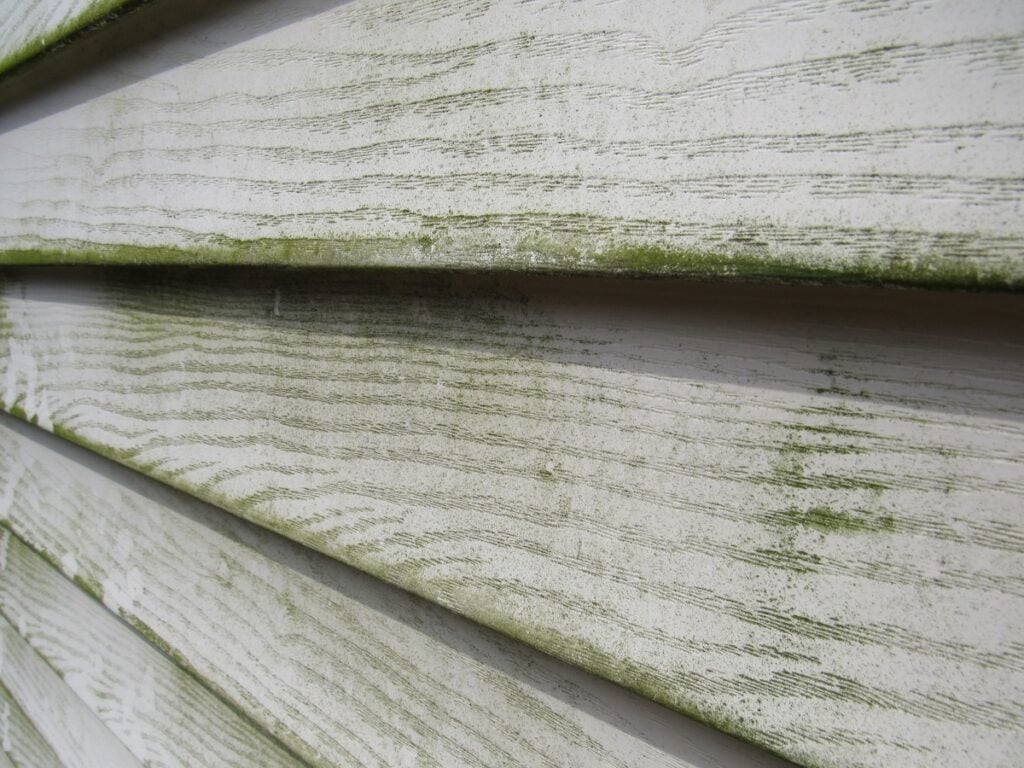
Do: Use the Right Nozzle and PSI
- 25- or 40-degree tip: These wide-angle nozzles provide a gentle but effective spray.
- 1500–2500 PSI: Enough to clean without damaging vinyl. Avoid commercial units with over 3000 PSI unless adjusted.
Don’t: Spray Upward Into Siding Gaps
Aiming upward can drive water behind the panels, where it won’t evaporate properly. Always aim downward or level with the siding to protect your sheathing and insulation.
Do: Clean on a Mild, Overcast Day
Sun can dry detergent too quickly, causing streaks. A cloudy day with mild temps (60–75°F) is ideal for even drying and better visibility.
Don’t: Pressure Wash Damaged Siding
If your siding is already cracked, loose, or warped, pressure washing can make it worse. Repair or replace damaged panels first.
⏰ How Often Should You Pressure Wash Vinyl Siding?
For most homes, once a year is enough. But certain factors can influence how often you should clean.
- Heavily shaded homes: More prone to mildew and moss—may need cleaning twice a year.
- Homes near trees or dusty roads: May collect debris faster.
- Post-storm cleanup: A pressure wash can refresh your home’s appearance after a rough season.
If you notice mold, algae, or heavy dirt before your regular schedule, go ahead and clean sooner.
🧼 Alternatives to Pressure Washing
If you’re not comfortable with a pressure washer—or your siding is older—there are other ways to keep your vinyl clean.
- Garden hose + siding brush: Gentle and effective for light dirt or touch-ups.
- Pump sprayer with siding cleaner: Great for small areas or spot cleaning.
- Soft wash system: Uses low pressure and cleaning agents. Many pros offer this as a safer alternative.
These methods take more time, but offer more control and less risk of damage.
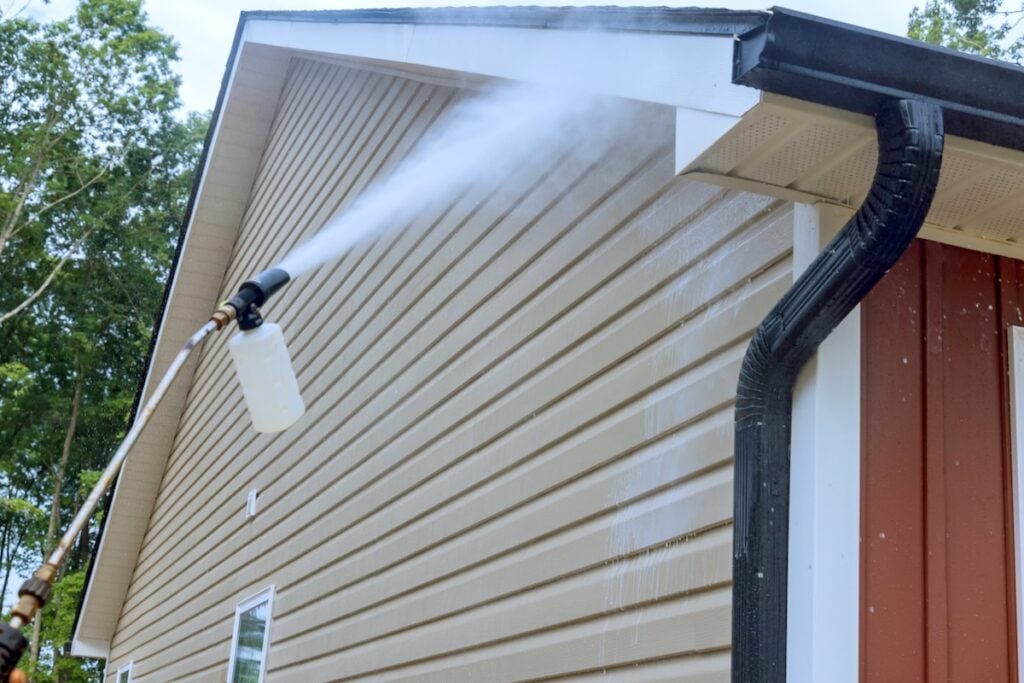
💪 Should You Hire a Professional?
If your home is two stories or higher, has hard-to-reach areas, or you’re unsure about using a pressure washer, hiring a pro is a good idea.
- Safety: Professionals have the gear and training to clean safely.
- Efficiency: A pro job usually takes less time and gets better results.
- Damage prevention: Experienced cleaners know how to avoid siding issues.
At Boss Exteriors, we also inspect for siding damage while we clean, so you know what’s cosmetic and what might need repair.
🤝 Clean Smart, Not Just Fast
Learning how to pressure wash siding is all about balance. Use the right pressure, technique, and timing, and you can safely remove years of buildup without damaging your home. Done right, it’s one of the easiest ways to boost curb appeal and extend the life of your vinyl siding.
At Boss Exteriors, we help homeowners maintain and protect their homes with expert siding services and honest advice. Whether you need a full siding replacement or an exterior refresh, our team has you covered.
Contact Boss Exteriors today for siding services and an exterior evaluation.
